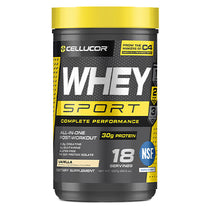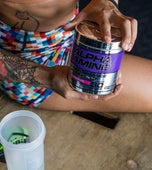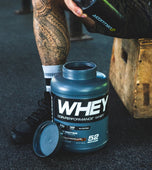
You're working out and you're taking your supplements, but how are you doing with your meals?
If you're just starting a fitness journey or you need a little refresher course on a clean eating regimen, sometimes the best place to start is your grocery list. Don't let all of your hard work in the gym go to waste- focus on healthy eating and take some time to create a clean eating plan!
Here's how to create a clean eating food list and hit the grocery store with a plan of attack.
1. Categorize and Conquer
The goal of any grocery shopping trip is to get in and out as quickly as possible while making the healthiest and most cost-effective choices. When you don't have a plan, you end up rolling up and down the aisles and grabbing food you don't need. Not only does that often mean a higher probability of walking out with some unhealthy choices, but it also ends up costing you more money.
So prior to your shopping trip, write down a list with eight different categories: protein, grains, seasonings, dairy products/non-dairy substitutes, fruits, vegetables, fats, and legumes.
It seems like a "duh" idea, but categorizing your list helps ensure you hit all the essentials. It also helps you identify where you may need some variety, which brings me to the next point.
2. Variety is the Name of the Game
Any person who has followed a clean eating regimen will tell you that variety is the name of the game. Sure, you may be okay with eating the same grilled chicken, brown rice, and broccoli a few times a week. But if that is your every meal, after a while you're going to struggle to stay on track with your nutrition. At the very least, you should try to vary your protein and definitely include at least two different green vegetables per week.
Here are some options to add variety to your diet:
Protein: Boneless, skinless chicken breast, cod, eggs, egg whites, lean ground chicken/turkey/beef/pork, salmon, flounder, flank steak. Ground meat should be 90% lean and 10% fat or even leaner, but if your budget doesn’t allow this, then 85% lean and 15% fat is acceptable. A high-quality protein powder like COR-Performance Whey is also a must in any grocery list. You can use COR-Performance Whey as a meal replacement when you want a meal that’s high in protein and low in other macros.
Grains: White/brown/jasmine rice, whole grain bread, whole grain wraps, buckwheat, traditional oatmeal, quinoa, whole wheat pasta, sprouted grain bread, steel-cut oats, whole wheat pizza crust.
Legumes: Black beans, kidney beans, garbanzo beans, pinto beans.
Seasonings: Honey, agave nectar, oregano, paprika, rosemary, ground black pepper, sea salt, shredded coconut, low sodium soy sauce, low sodium teriyaki sauce, parsley, paprika, ketchup, cinnamon.
Dairy and Non-Dairy Substitutes: Almond milk, cottage cheese, Greek yogurt, feta cheese, 1% or 2% milk, chocolate milk (for post-workout).
Fats: Almonds, almond butter, peanuts, peanut butter, cashews, cashew butter, walnuts, chia seeds, coconut oil, extra-virgin olive oil, grapeseed oil, hemp oil.
Fruits and Vegetables: Apples, asparagus, avocado, bananas, beets, broccoli, blueberries, cranberries, carrots, celery, dates, garlic, green onions, green beans, dates, kiwi, lemons, oranges, pineapple, kale, mushrooms, red bell peppers, raisins, romaine lettuce, spinach, strawberries, tomatoes, zucchini. For the fruit and veggies, try to buy the fruits fresh, unless you’re buying a frozen fruit for the sole purpose of using it in a smoothie.
Water: One of the most important parts of clean eating is proper hydration. Invest in a system where you have access to a gallon of water per day. That may be simply buying six gallons of water to last you until your next shopping trip, or you can invest in a water filter system.
You already know you should avoid cakes, cookies, chips (unless they’re quinoa or protein chips), ice cream, and soda if you want a lean, sculpted physique. But what about those so-called "healthy" items that are really diet busters in disguise?
Watch out for juices made from concentrate (get 100% juice or make your own juice), frozen vegetable blends with sauces, and packaged rice blends. Some frozen vegetable blends with sauces pack a bunch of unnecessary preservatives, sugar, and carbs. Likewise, some packaged rice blends have way too much sodium, upwards of 600mg! This is why it’s always a good idea to look over the ingredient lists before putting something in your cart. Read the label! For a low-sodium packaged rice, try Uncle Ben’s Brown Rice.
4. Knock It All Out at Once
Instead of shopping every night or every other night after work, do one grocery store trip per week and meal plan with enough food to last you 7+ days.
You'll find that you’re spending less time and less money overall because you’re just adding to the inventory you already invested in from the previous week. That means you can freeze some of the meats you purchased and hold on to the extra frozen veggies for the next week.
5. Refresh and Donate
Ok, now it's time to take a hard look at what's already lurking your refrigerator and cabinets.
If your goal is to be lean and healthy, you shouldn't have any foods in your possession that threaten your progress. You’ll want to focus on minimally processed foods in order to stick to your clean eating plan. Go back to the above list. If you see items that do not fit into these categories, throw them away or donate them to a local food pantry. Just get them out of reach!
Hopefully, you’re now feeling more confident and ready to get to the store and fill your shopping cart with everything on your eating clean food list. For more nutrition, fitness, and training advice, be sure to check out our blog!
About Mark
Mark Barroso is an NSCA-CPT, Spartan SGX Coach, and editor/writer for Men's Health, Muscle & Fitness Magazine, Fitness Magazine, and Men's Fitness.











